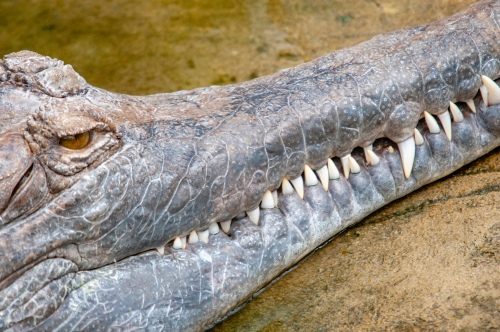MRes Simulating the locomotion of an extinct archosaurian reptile
Supervisors: Professors John R. Hutchinson and Friedl De Groote
Department: Comparative Biomedical Sciences and and KU Leuven, Belgium
Project Details

How did extinct dinosaurs (and their close relatives) move? Archosaurs (crocodiles, birds and Mesozoic dinosaurs, etc.) began diversifying in the Triassic period <250 million years ago, then experienced a mass extinction ~200 million years ago, with only a few lineages including dinosaurs surviving. Why any lineages survived or went extinct remains unclear. One potential component of this pattern is how well any species could locomote (walk, run, jump, etc.).
Predictive biomechanical computer simulations can have some success in estimating such locomotor performance. We seek a student(s) to use these tools to test how one such species moved (or didn’t move); either a biped or quadruped, dinosaur or other archosaur. We would discuss with the student what they would be most interested to test, involving them in the scientific process. Initial 3D model data are available, so the student can proceed immediately. Students would learn (further) expertise in biomechanics, anatomy, palaeontology, computer programming and 3D graphics.
Note: 2 MRes students can be accommodated on this project.
References
- Bishop, P.J., Falisse, A., De Groote, F., Hutchinson, J.R. 2021. Predictive simulations of running gait reveal a critical dynamic role for the tail in bipedal dinosaur locomotion. Science Advances 7:abi7348. https://doi.org/10.1126/sciadv.abi7348
- Cuff, A.R., Demuth, O.E., Michel, K.B., Otero, A., Pintore, R., Polet, D.T., Wiseman, A.L.A., Hutchinson, J.R. 2022. Walking -- and running and jumping -- with dinosaurs and their cousins, viewed through the lens of evolutionary biomechanics. Integrative and Comparative Biology icac049, https://doi.org/10.1093/icb/icac049
- De Groote, F., & Falisse, A. (2021). Perspective on musculoskeletal modelling and predictive simulations of human movement to assess the neuromechanics of gait. Proceedings of the Royal Society B, 288(1946), 20202432. https://doi.org/10.1098/rspb.2020.2432
Requirements
Essential:
- Must meet our standard MRes entry requirements.
-
Do not need to be a vet. Undergraduate degree in biological sciences-related subject; or engineering, computer sciences, and similar fields.
Desirable:
-
Some prior expertise in biomechanics, anatomy/palaeontology, engineering, 3D graphics, or (especially) programming is highly desirable.
This can be taken full-time or part-time (12months FTE) project commencing in October 2023, based at RVC's Hawkshead campus.
Funding
Partially funded. The lab will be covering the project costs, with the MRes student expected to meet the course fees and their living expenses.
International applicants are welcome to apply but must be able to fund the difference between "Home" and "Overseas" tuition fees.
You can find information on fees and funding online. A postgraduate master's loan may be available to help cover costs.
How to Apply
For more information on the application process and English Language requirements see How to Apply.
Deadline: 30th July 2023
We welcome informal enquiries - these should be directed to jhutchinson@rvc.ac.uk
Interview date and location: TBC (August 2023)
